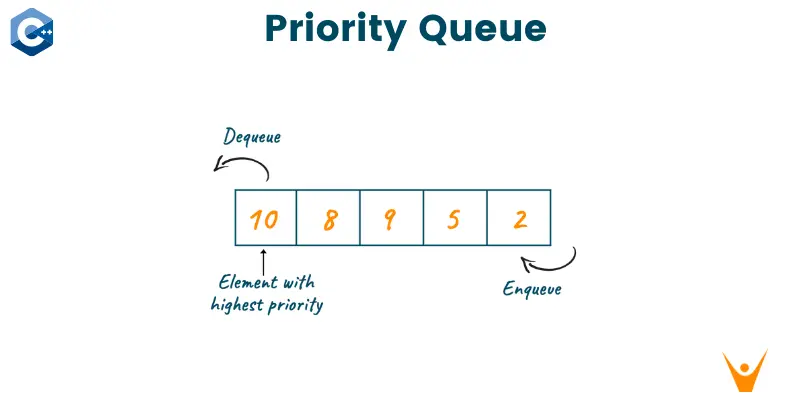c++ 优先级队列
c++ 中的优先级队列是基于堆实现的,可以快速地插入新元素,并能够快速地取出当前优先级最高(或最低)的元素。优先级队列在
基本使用
不指定优先级的比较方式,采用默认的 std::less
1
2
3
4
5
6
7
8
9
10
11
12
13
14
15
16
17
18
#include <iostream>
#include <queue>
int main() {
std::priority_queue<int> pq;
pq.push(30);
pq.push(20);
pq.push(50);
pq.push(40);
// 循环取出并打印元素,直到队列为空
while (!pq.empty()) {
// 访问当前优先级最高的元素
std::cout << pq.top() << " ";
pq.pop();
}
std::cout << "\n";
return 0;
}
上面的代码最终会输出如下内容:
1
50 40 30 20
自定义比较方式
让优先级队列按照从小到大的顺序排列,可以通过定义自己的比较函数或者使用 std::greater
1
2
3
4
5
6
7
8
9
10
11
12
13
14
15
16
17
18
19
#include <iostream>
#include <queue>
#include <functional> // for std::greater
int main() {
// 创建一个int类型的优先级队列,元素按照从小到大的顺序排列
std::priority_queue<int, std::vector<int>, std::greater<int>> pq;
pq.push(30);
pq.push(20);
pq.push(50);
pq.push(40);
// 循环取出并打印元素,直到队列为空
while (!pq.empty()) {
std::cout << pq.top() << " ";
pq.pop();
}
std::cout << "\n";
return 0;
}
上面的代码最终会输出如下内容:
1
20 30 40 50
自定义存储类型
1、通过重载 < 操作符实现比较
下面是一个使用重载 < 操作符的例子,我定义了一个简单的 Person 类,根据人的年龄来决定其在优先级队列中的优先级。年龄较大的人具有较高的优先级。
1
2
3
4
5
6
7
8
9
10
11
12
13
14
15
16
17
18
19
20
21
22
23
24
25
26
27
28
29
30
31
32
33
#include <iostream>
#include <queue>
#include <string>
struct Person {
std::string name;
int age;
Person(const std::string &n, int a)
: name(n), age(a) {}
// 重载 < 操作符
bool operator<(const Person& other) const {
// 注意:优先级队列是按照元素的 < 操作符的相反顺序排列的,
// 因此这里使用 > 来比较,以确保年龄大的人优先级更高
return age > other.age;
}
};
int main() {
std::priority_queue<Person> pq;
pq.push(Person("Alice", 30));
pq.push(Person("Bob", 25));
pq.push(Person("Charlie", 35));
pq.push(Person("Diana", 32));
// 循环取出并打印元素,直到队列为空
while (!pq.empty()) {
Person p = pq.top();
std::cout << p.name << " - " << p.age << std::endl;
pq.pop();
}
std::cout << "\n";
return 0;
}
上面的代码最终会输出如下内容:
1
2
3
4
Bob - 25
Alice - 30
Diana - 32
Charlie - 35
2、通过提供一个仿函数来实现
1
2
3
4
5
6
7
8
9
10
11
12
13
14
15
16
17
18
19
20
21
22
23
24
25
26
27
28
29
30
#include <iostream>
#include <queue>
struct MyObject {
int value;
MyObject(int v) : value(v) {}
};
class Compare {
public:
bool operator()(const MyObject & a, const MyObject & b) {
// 定义优先级:值较小的对象优先级更高
return a.value > b.value;
}
};
int main() {
std::priority_queue<MyObject, std::vector<MyObject>, Compare> pq;
pq.push(MyObject(30));
pq.push(MyObject(20));
pq.push(MyObject(50));
pq.push(MyObject(40));
// 循环取出并打印元素,直到队列为空
while (!pq.empty()) {
std::cout << pq.top().value << " ";
pq.pop();
}
std::cout << "\n";
return 0;
}
上面的代码最终会输出如下内容:
1
20 30 40 50
本文由作者按照 CC BY 4.0 进行授权
